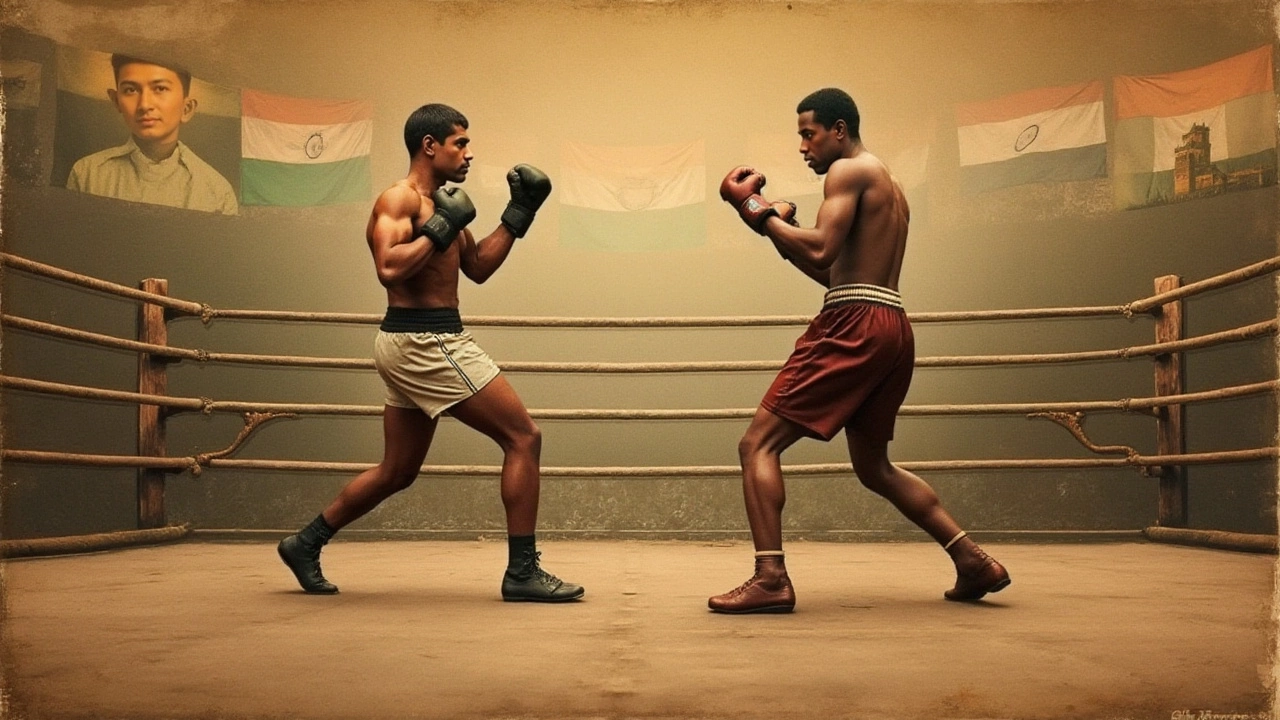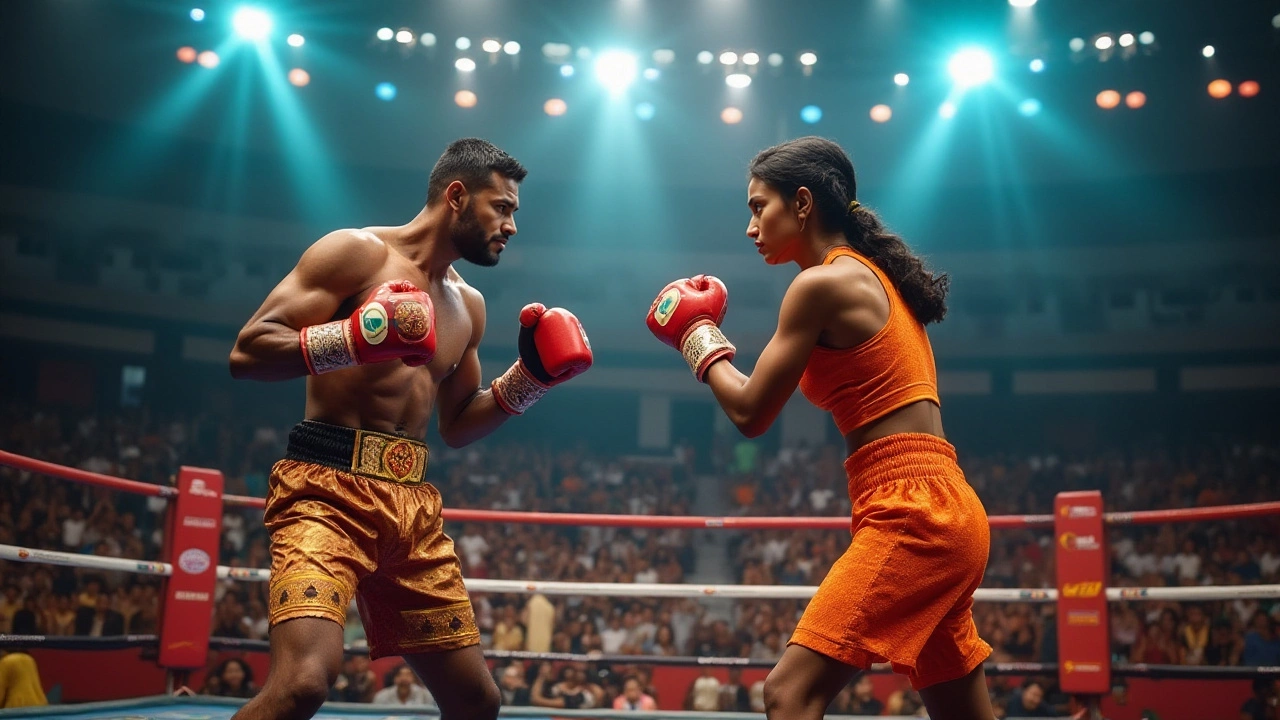Boxing is a sport entrenched in history, its roots tracing back to ancient civilizations. Over the centuries, it has evolved into a globally celebrated athletic competition, characterized by discipline, prowess, and strategy. At the heart of boxing lies the boxing match—a contest that pits two skilled fighters against one another in a display of endurance and tactical ability.
Every match is governed by a set of rules that ensure the bout is conducted fairly and safely. Time-tested strategies and unique styles make each match a compelling spectacle, keeping spectators at the edge of their seats. Whether you're a seasoned fan or new to the sport, understanding the intricacies of a boxing match enhances appreciation for this timeless art form.
History of Boxing
Boxing holds a unique place in sports history, woven into the fabric of human culture for millennia. The earliest records trace back to ancient Sumeria and Egypt, where depictions of pugilistic contests were carved into stone reliefs. These ancient bouts were part of religious festivals, demonstrating strength and skill. Boxing spread across the ancient world, evolving with each civilization. The Greeks embraced it by introducing boxing to the Olympic Games in 688 B.C., which followed a brutal set of rules devoid of rounds and weight classes. Fighters competed without gloves, a testament to their resilience and fortitude. This ancient lineage paved the way for the sport's eventual metamorphosis.
The Roman Empire famously adopted boxing, albeit adding a more perilous twist. Fighters wore cestus, leather thongs sometimes studded with metal, often leading to severe injuries or even death. Boxing's popularity flourished among the Romans until it was banned in A.D. 393 when the barbaric nature of the contests became too much to bear. Yet, the sport refused to die, quietly simmering under the surface across Europe. With time, boxing found renewal in England during the 17th century, reviving with bare-knuckle matches in unsanctioned arenas. London's Jack Broughton, a prominent figure of the era, crafted the first formalized rules in 1743, setting the groundwork for safer bouts and introducing gloves, albeit as an option.
With the advent of the 19th century came a further refinement. The Queensberry Rules were written in 1867, shifting boxing into a more scientific sport. These rules mandated the use of gloves and established three-minute rounds with one-minute rests. They also prohibited gouging and wrestling, emphasizing skill over brute force. Boxing quickly gained a massive following, becoming a staple of sporting culture in both the UK and the US. Legendary fighters like John L. Sullivan captivated audiences around the world with their prowess and showmanship, solidifying boxing's place in modern sports. This era fostered global recognition and acceptance, cementing the sport's cultural significance.
The 20th century witnessed boxing's golden age. Events like the 'Fight of the Century' between Jack Johnson and James J. Jeffries in 1910 and later bouts featuring icons like Muhammad Ali placed boxing in the global limelight. Muhammad Ali, with his charismatic bravado, not only redefined the art of boxing inside the ring but also brought attention to socio-political issues outside of it. He once said,
"Float like a butterfly, sting like a bee. The hands can't hit what the eyes can't see."Such was the influence of figures like Ali that boxing transformed into a platform for cultural commentary and personal expression, embedding it into broader historical narratives.
Over time, boxing has continued to evolve, intersecting with broader cultural and technological shifts. Today, it remains a vibrant part of the sporting world, captivating new generations while respecting the traditions that shaped it. Televised bouts, international competitions, and an evolving set of rules ensure that boxing remains as dynamic and enthralling as ever. The advent of women's boxing and its inclusion in the 2012 Olympic Games paved the way for new narratives within the sport, expanding its appeal and accessibility. As boxing continues to captivate audiences, it serves as a testament to human endurance, strategy, and the timeless allure of one-on-one competition.

Basic Rules and Structure
The rules and structure of a boxing match are what give this sport its distinctive character and fair play. Organized under the regulations of major bodies like the World Boxing Association or the International Boxing Federation, matches take place within a square-sized ring that typically measures between 16 and 24 feet on each side. These rings are enclosed by four ropes to ensure that fighters stay within the boundaries during the vigorous exchanges of punches.
Each match is divided into a series of timed rounds, usually lasting three minutes each, with one-minute intervals for rest between rounds. Professional bouts can range from anywhere around four to twelve rounds, with title fights generally scheduled for twelve rounds. A designated referee, stationed inside the ring, oversees the action to enforce the rules, judge fouls, and ultimately protect the fighters. Decisions about who wins a match are generally based on a point system scored by a panel of judges sitting ringside, unless it ends in a knockout or technical knockout.
There are specific types of punches allowed in boxing, predominantly the jab, cross, hook, and uppercut, each requiring precise timing and technique. Fighters often engage in offensive strategies to outscore or overpower their opponents while simultaneously employing defensive maneuvers to avoid getting hit. According to the Marquess of Queensberry rules, which have shaped modern boxing, fighters must wear padded gloves. This iconic rulebook, developed in the 1860s, outlines essential regulations such as no hitting below the belt, tripping, holding, kicking, or wrestling.
"Boxing is the ultimate challenge. There's nothing that can compare to testing yourself the way you do every time you step into the ring," remarked Sugar Ray Leonard, illustrating the sport's rigorous demands.
Violations of the boxing rules can result in warnings, point deductions, or disqualification, depending on the severity and intention of the infraction. The cornerstone of boxing's appeal lies in its blend of strategic depth, athletic prowess, and historical resonance, making the understanding of its rules vital for all enthusiasts and practitioners. Fighters train tirelessly to master these regulations and techniques, crafting their styles and personal strategies to prevail in the competitive arena of boxing.

Techniques and Strategies
Understanding the various techniques and strategies employed in a boxing match is key to appreciating the level of skill and preparation these athletes bring into the ring. Boxing is not just about brute strength; it's a sophisticated dance of offensive and defensive maneuvers executed with precision and timing. Fighters often spend years perfecting their style, which may range from the aggressive 'in-fighting' style to the more calculated 'out-fighting' approach. For instance, in-fighters like to stay close, delivering powerful short-range punches such as hooks and uppercuts, while evading their opponent's attacks with head movements and footwork.
Apart from style, each fight's strategy is carefully planned. Fighters study their opponents, looking for weaknesses to exploit while playing to their strengths. Some might opt for a cautious approach, feeling out the opponent in the early rounds before launching an attack. Others may go all-out from the start, hoping to wear down their opponents quickly. This strategic complexity is part of what makes boxing both an art and a science. Moreover, understanding the subtle interplay between a fighter's speed, agility, and power is crucial in formulating an effective game plan.
The importance of stamina cannot be overstated. Boxing matches are typically structured into three-minute rounds with one-minute breaks. This taxing schedule demands peak cardiovascular conditioning, ensuring fighters can maintain high energy levels throughout the bout. Legendary boxer Muhammad Ali once said,
"The fight is won or lost far away from witnesses—behind the lines, in the gym, and out there on the road, long before I dance under those lights."His words encapsulate the dedication required in preparing both the mind and body.
Defensive Maneuvers
Defense in boxing is as vital as landing blows. Fighters employ various defensive techniques to protect themselves, including blocking, parrying, slipping, and bobbing. Each requires exceptional reflexes and foresight, allowing boxers to anticipate and neutralize incoming attacks. For example, slipping involves a subtle yet effective head movement that avoids punches by a narrow margin, often setting up a counterattack. The utilization of effective footwork also helps in maintaining the optimal distance between opponents, crucial for executing any tactical plan.
In contemporary boxing, the importance of a good defense can be observed through meticulous training regimes that incorporate both physical exercises and mental conditioning. Training focuses not only on the development of physical abilities but also on enhancing tactical awareness and adaptability during a fight. As such, fighters with strong defensive skills may tire their opponents, leading them to make mistakes that can be capitalized on during pivotal moments in the match.
| Defense Technique | Purpose | Example |
|---|---|---|
| Slip | Avoid incoming punches | Head movement to the side |
| Bob and Weave | Dodge punches while maintaining position | Knee flexion with upper body roll |
| Parry | Redirect punches | Open palm deflection |
Understanding these techniques and strategies not only enriches the viewing experience of a boxing match but also provides insight into the immense skill and athleticism required to succeed in this storied sport. Fans and aspiring boxers alike can delve deeply into these nuances, appreciating each bout's intricacies and the unique blend of science, skill, and heart that defines boxing.

Famous Boxing Matches
Throughout the history of boxing, a handful of matches have captured the imagination of fans worldwide, creating lasting memories and inspiring future generations of fighters. One such legendary bout is the "Fight of the Century," which took place on March 8, 1971, at Madison Square Garden. This iconic match was between Muhammad Ali and Joe Frazier, both undefeated champion fighters at the time. The palpable tension in the air was mirrored by a global audience eagerly waiting to see who would emerge victorious. In a thrilling showdown that went the full fifteen rounds, Frazier claimed victory by unanimous decision, forever cementing the match's place in the annals of boxing history.
Another unforgettable clash is the "Rumble in the Jungle" on October 30, 1974, in Kinshasa, Zaire. This epic encounter pitted the formidable George Foreman against the ever-charismatic Muhammad Ali. Despite Foreman being the odds favorite due to his sheer power and undefeated record, Ali employed a strategic genius known as the "rope-a-dope" tactic, allowing Foreman to tire himself out by punching ineffectively. In the eighth round, Ali seized his moment, delivering a combination that sent Foreman to the floor, securing his legacy as one of the greatest fighters with a spectacular knockout.
The "Thrilla in Manila," held on October 1, 1975, in the Philippines, was the third and final confrontation between Ali and Frazier. The grueling bout under sweltering heat conditions was an exhibition of willpower and endurance from both legends. In one of the most punishing and exhausting contests in boxing history, Ali emerged victorious when Frazier's corner called an end to the fight after the fourteenth round. The fight was so intense that Ali himself admitted it was "the closest thing to dying that I know," highlighting the grueling nature of legendary boxing matches.
Among more recent boxing spectacles, the May 2, 2015 fight between Floyd Mayweather Jr. and Manny Pacquiao stands out as one of the most anticipated bouts of the 21st century. Dubbed "The Fight of the Century," even before it occurred, this match garnered intense hype and an unprecedented pay-per-view audience. Known for his impeccable defensive skills, Mayweather neutralized Pacquiao’s aggressive strategy to win by unanimous decision, adding another celebrated victory to his undefeated record.
A more controversial yet equally talked-about bout took place on June 28, 1997, involving Mike Tyson and Evander Holyfield, famously known as "The Bite Fight." During the fight, Tyson infamously bit off a portion of Holyfield's ear in frustration after a series of headbutts by Holyfield. The incident led to Tyson's disqualification and a suspension, making it one of the most memorable and contentious events in boxing's storied tradition. Despite the controversy, the match is a testament to boxing's unpredictable nature and ability to create global conversation.
